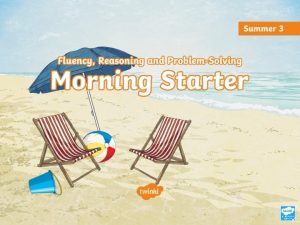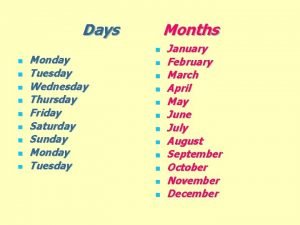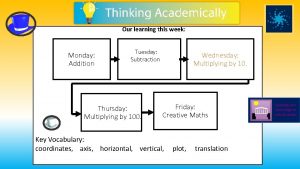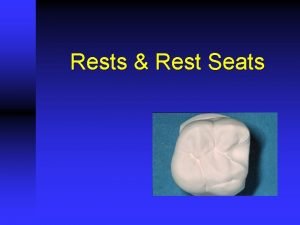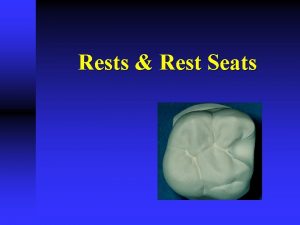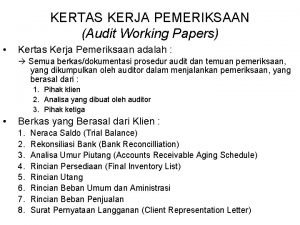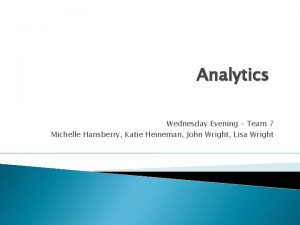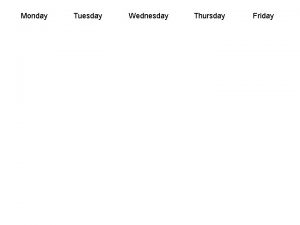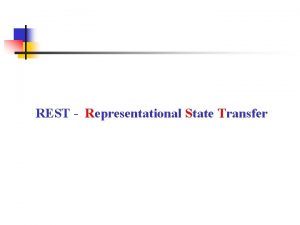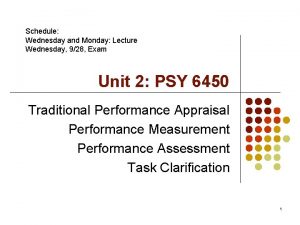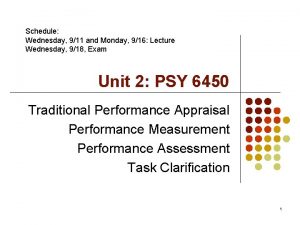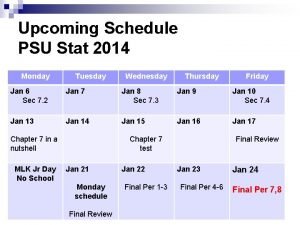Monday Schedule for Rest of Semester Tuesday Wednesday






















- Slides: 22

Monday Schedule for Rest of Semester Tuesday Wednesday Thursday Friday 28 29 30 1 2 Unit 1 Review Unit 2/3 Review Unit 4/5/6 Review Unit 7 Review Unit 8/9 Review 5 6 7 8 9 EOC (1 st/2 nd) EOC (4/3/2/1) EOC (3 rd/4 th) 12 13 14 15 16 19 20 21 22 23 1 ST/2 ND FINALS 3 RD/4 TH FINALS NO SCHOOL

GSE Algebra I Unit 8/9 Review

Unit 5: Comparing and Contrasting Functions Key Ideas Construct and Compare Linear, Quadratic, and Exponential Models and Solve Problems Interpret Expressions for Functions in Terms of the Situation They Model Build New Functions from Existing Functions Understand the Concept of a Function and Use Function Notation Interpret Functions that Arise in Applications in Terms of the Context

Construct and Compare Linear, Quadratic, and Exponential Models and Solve Problems • Recognize linear and exponential growth rates – Linear = constant rate of change – Exponential = common ratio (multiplying/dividing by same amount each time) • An exponential will eventually exceed all other functions

Ex 1: Given the sequence 7, 10, 13, 16… a. Does it appear to be linear or exponential? b. Determine a function to describe the sequence. c. What would the 20 th term of the sequence be? a. Linear b. an = 3 n + 4 c. a 20 = 64

Ex 2: This table shows that the value of f(x) = 5 x 2 + 4 is greater than the value of g(x) = 2 x over the interval [0, 8]. As x increase, will the value of f(x) always be greater than the value of g(x)? Explain how you know. Eventually g(x) will exceed f(x) because eventually. If we look at g(10) and f(10) we see that g(10) is greater.

Interpret Expressions for Functions in Terms of the Situation They Model • A parameter is the independent variable or variables in a system of equations with more than one dependent variable. • A parameter as a constant term generally affects the intercepts. • If the parameter is a coefficient, in general it will affect the rate of change.

Ex 3: Alice finds that her flower bulbs multiply each year. She started with just 24 tulip plants. After one year she had 72 plants. Two years later she had 120. Find a linear function to model the growth of Alice’s bulbs.

Ex 4: Suppose Alice discovers she counted wrong the second year and she actually had 216 tulip plants. She realizes the growth is not linear because the rate of change was not the same. She must use an exponential model for the growth of her tulip bulbs. Find the exponential function to model the growth.

Build New Functions from Existing Functions • Parent Functions: – Linear: f(x) = x – Quadratic: g(x) = x 2 – Exponential: h(x) = 2 x • Transformations: Reflection, Stretch, Shrink, Translation

Ex 5: Look at the graphs of the function f(x) = x 2 – 1 and g(x) = x – 1. What transformation makes g(x) > f(x) for -2 < x < 3?

Ex 6: As the input x increases by a factor of 3, the output g(x) doubles. What type of functions fits this situation? Though the rate increase by a constant factor, meaning it is exponential, the increase would follow an exponential model with a base of 2 and an exponent of x/3.

Interpret Functions in Context • Continuous vs Discrete • When examining a function, we look at the following features: – – – – Domain Range x-intercept/root/zero y-intercept interval of increasing, decreasing, constant Minimum or Maximum Average Rate of Change End Behavior

Ex 7: Roger is washing cars for people in his neighborhood. He bought cleaning supplies with his own money before he began washing cars. He charges a flat fee of $15 for each car washed. Roger’s total amount of profit, y, in dollars, for washing x cars can be modeled by the function y = 15 x – 40. a. What is the domain of this function? b. What does the y-intercept of this function represent?

Unit 6: Describing Data Key Ideas Summarize, Represent, and Interpret Data on a Single Count or Measurable Variable Summarize, Represent, and Interpret Data on Two Categorical and Quantitative Variables Interpret Linear Models

Summarize, Represent, and Interpret Data on a Single Count or Measurable Variable • Measures of Central Tendency – Mean – Median • • First Quartile (Lower Quartile): Q 1 Third Quartile (Upper Quartile): Q 3 Interquartile Range Box Plot: 5 Number Summary

Summarize, Represent, and Interpret Data on a Single Count or Measurable Variable • Histogram • Outliers: below Q 1 – 1. 5(IQR) or above Q 3 + 1. 5(IQR) • Mean Absolute Deviation (MAD) • Skewness • Unimodal, Bimodal, Multimodal

Interpret Expressions for Functions in Terms of the Situation They Model • A parameter is the independent variable or variables in a system of equations with more than one dependent variable. • A parameter as a constant term generally affects the intercepts. • If the parameter is a coefficient, in general it will affect the rate of change.

Summarize, Represent, and Interpret Data on Two Categorical and Quantitative Variables • Categorical vs Quantitative • Bivariate Data – Can be displayed with a two-way frequency chart – Joint Frequency – Marginal Frequency – Conditional Frequency

Summarize, Represent, and Interpret Data on Two Categorical and Quantitative Variables • Scatter Plot – Line of Best Fit – Regression • Correlation Coefficient • Correlation vs Causation

Ex 1: A fast-food restaurant wants to determine whether the season of the year affects the choice of soft-drink size purchased. It surveyed 278 customers, and the table shows its results. a. In which season did the most customers prefer jumbo drinks? b. What percentage of those surveyed purchased small drinks? c. What percentage of those surveyed purchased medium drinks in the summer? d. What do you think the fast-food restaurant learned from its survey?

Ex 2: This scatter plot suggest a relationship between the variables age and income. A. What type of relationship is suggested by the scatter plot (positive/negative, weak/strong)? B. What is the domain of ages considered by the researchers? C. What is the range of incomes? D. Do you think age causes income level to increase? Why or why not? A. B. C. D. Strong Positive Domain: 18 to 60 years Range: $10, 000 to $70, 000 No, the variables are related but age does not cause income to increase
 Marvelous monday terrific tuesday wonderful wednesday
Marvelous monday terrific tuesday wonderful wednesday 1
1 Enum week sunday monday
Enum week sunday monday Monday=621 tuesday=732 wednesday=933
Monday=621 tuesday=732 wednesday=933 Monday tuesday wednesday thursday friday calendar
Monday tuesday wednesday thursday friday calendar Tuesday wednesday saturday
Tuesday wednesday saturday Monday tuesday wednesday thursday friday saturday sunday
Monday tuesday wednesday thursday friday saturday sunday Tuesday-sunday
Tuesday-sunday Slides mania
Slides mania How did you ... your last weekend?
How did you ... your last weekend? On monday and tuesday
On monday and tuesday My tuesday schedule
My tuesday schedule Rest and rest seat
Rest and rest seat Positive rest seat
Positive rest seat Ghost cries purgatorium
Ghost cries purgatorium An object at rest stays at rest
An object at rest stays at rest Rests and rest seats
Rests and rest seats Contoh top schedule dan supporting schedule
Contoh top schedule dan supporting schedule Wednesday lunch
Wednesday lunch Happy wednesday march
Happy wednesday march Tuesday bell work
Tuesday bell work Web analytics wednesday
Web analytics wednesday Fe exam results wednesday
Fe exam results wednesday



